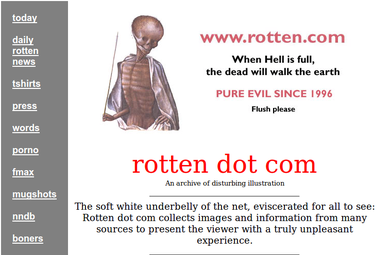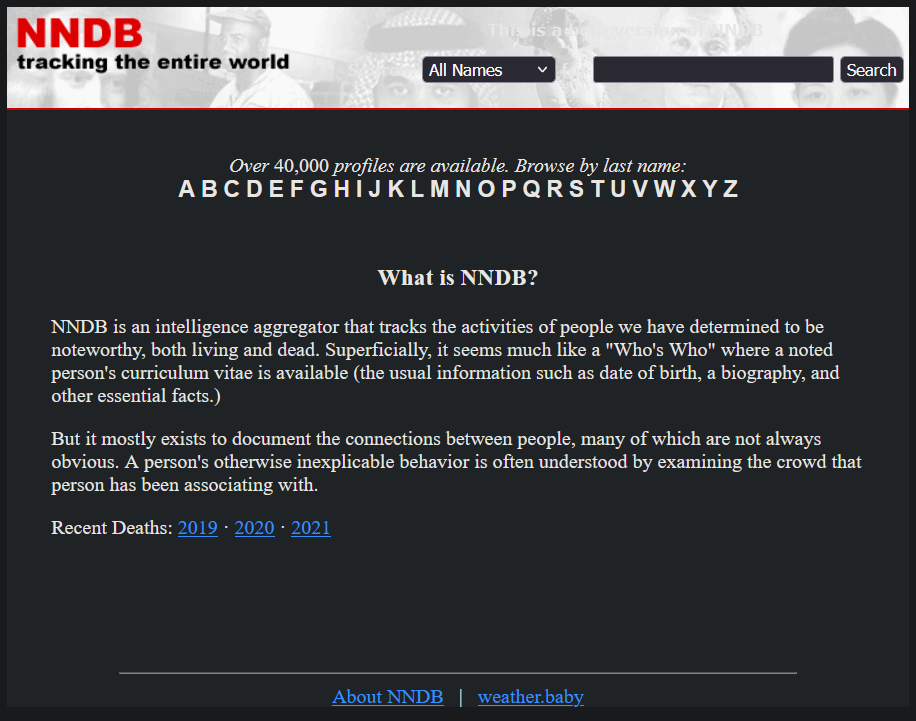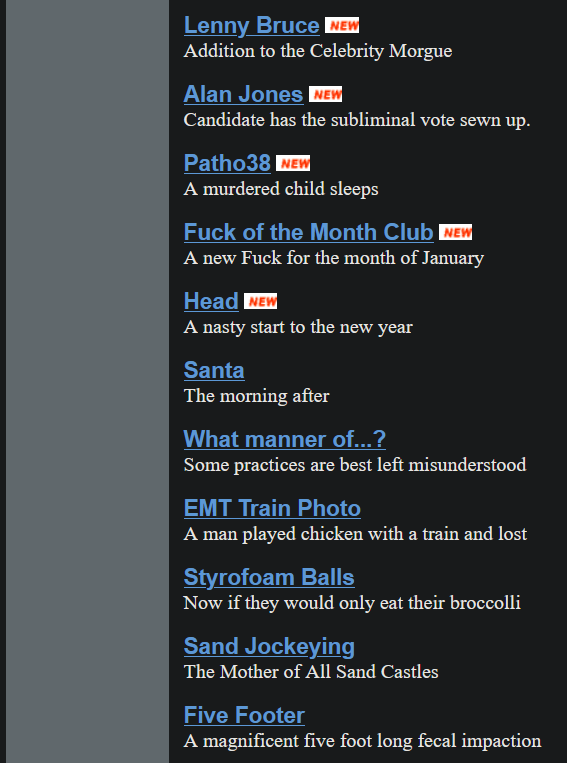Rotten.com (1996)
Summary: Rotten.com was an American shock website active from 1996 to 2012. It was known for hosting graphic images of death, violence, and decomposition, as well as explicit content. Founded by a developer known as Soylent Communications[1], the site presented itself as a defender of free speech and a platform for morbid curiosity. User-submitted material formed the bulk of the content, and the website maintained a minimal, almost clinical layout with brief, often darkly humorous descriptions of links. Updates slowed after 2009, and the final content was posted in 2012, though the front page remained archived until 2018.
History
The site began in 1996 after Soylent wrote a program to identify unclaimed single-word dictionary domains. “Rotten” was available and registered that year. Over time, the website expanded to include ancillary projects such as The Daily Rotten, a daily news site focused on extreme topics, The Gaping Maw, an editorial and commentary archive, and the Rotten Dead Pool, a prediction game about celebrity deaths. In 2002, Rotten.com launched NNDB[2], a database of notable people, which continues to exist with limited updates. Some ancillary projects were temporarily taken offline to comply with U.S. government regulations on pornography[3].


Content
Rotten.com mostly featured material submitted by its users, and it was often graphic and unsettling. The content ranged from accidents and suicides to crime scenes, autopsies, and other forensic footage. Some images were mislabeled or even fabricated, like a fake photo claiming to show Princess Diana’s body. Alongside gore and violence, the site also hosted explicit sexual material. Links were simple, without thumbnails, and usually had short, darkly humorous descriptions. Some of the site’s most notorious content included photos of September 11 jumpers and various other forensic videos from around the world.

Impact
Rotten.com was not particularly influential in shaping internet culture, but it was one of the first websites to focus on graphic content, death, and violence. Its prominence came less from a lasting impact on online communities and more from its memorable name and branding. The site also sold merchandise, which was uncommon for early shock websites, and this helped spread its notoriety beyond the core audience. Its early adoption of user-submitted content combined with darkly humorous descriptions set a template for other sites, but most later platforms did not directly trace their design or approach back to Rotten.com.
Despite this, the site played a role in shaping perceptions of what could exist online. By hosting unfiltered and controversial material, it drew attention to debates over free speech, censorship, and online ethics. While it did not create large-scale cultural change, it demonstrated that there was a market for morbid curiosity and extreme content. Its existence helped normalize the idea that the internet could host material far beyond the bounds of mainstream media, even if its direct influence on later websites was limited.
References
- [1] "The Internet's public enema No. 1" — https://www.salon.com/2001/03/05/rotten_2/
- [2] NNDB — #https://nndb.com/
- [3] 18 U.S. Code § 2257 — https://www.law.cornell.edu/uscode/text/18/2257